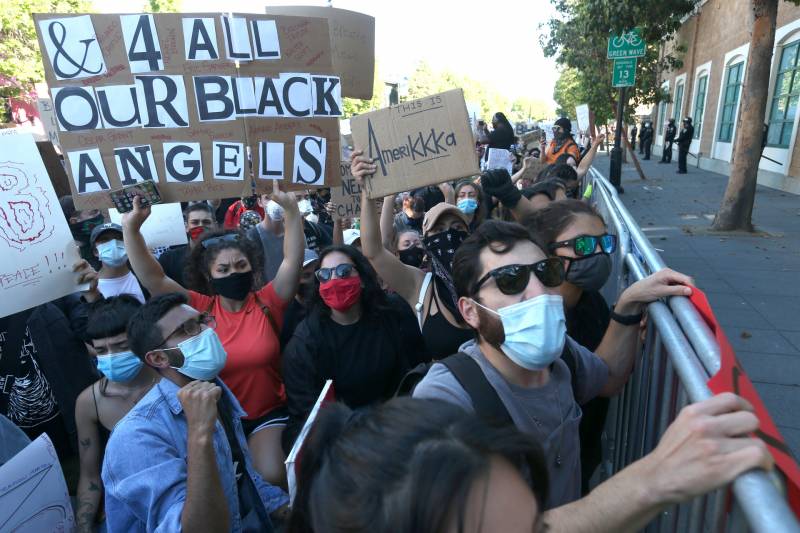“We investigate every reported COVID-19 case and try to elicit where they may have been exposed,” Moss said. “This includes a specific question related to mass gatherings, including protests.”
Attending protests, Moss said, is “not emerging as a risk for the most recent cases that we’re seeing in the county.”
Stanford epidemiologist Yvonne Maldonado has come to the same conclusion. “I was worried that the protests could be super-spreader events,” she said. “It turns out, the bottom line is it doesn’t look like that happens.”
Kirsten Bibbons-Domingo, chair of the Epidemiology and Biostatistics Department at UCSF, says the rise in coronavirus cases and hospitalizations in California “has as much to do with just reopening the economy as it does with any discrete events like the protests.”
The upticks in cases do not coincide with the timing or locations where the protests took place, she said, though making a final determination on that is difficult without more testing and enough contact tracers.
San Francisco does not have data related to protesters who have tested positive because the testing sites are not asking people if they have recently participated in demonstrations, city spokesperson Cristina Padilla said.
The state is still analyzing whether the protests contributed to the growing number of infections, Gov. Gavin Newsom said Wednesday, by reviewing COVID-19 case and hospitalization data.
The total number of cases and hospitalizations in the state has surged. Newsom on Monday said more than 35% of the state’s caseload emerged in the previous two weeks, spurring him to issue an order that residents throughout California wear face masks.
The governor discouraged people from assuming, based on early reports, that the virus doesn’t spread at protests.
“Use common sense,” Newsom said. “Just because someone else did something that is not good for their public health doesn’t mean that you should do something that’s not good for your public health.”
On Friday, Sonia Angell, director of the California Department of Public Health, said she thinks the protests could be “a contributor” to the state’s rising cases, but she said it “is difficult to tease out exactly.”
“At the same time the people were going out to protest, we also had increased movement for other reasons in our community because our economy is also opening up and people are going out,” she said.
Angell encouraged Californians to practice physical distancing.
Alameda County officials are encouraging people who attended demonstrations to get tested at sites in Oakland, Berkeley or other areas throughout the county. People do not need insurance, and they will not be asked about their immigration status, according to the county.
San Francisco officials say they are also offering free COVID-19 testing for people who have attended a recent protest.
So What Happened?
Health experts say the lack of a protest-related surge might be attributed to several factors.
The outdoors settings, where the virus doesn’t spread as well, and the wearing of masks likely lowered the rates of transmission, says Bibbins-Domingo. “What I saw on television — many people, most people were wearing masks,” she said.
Protesters may also be younger and therefore have mild symptoms or be asymptomatic, she added, and those infections would not have registered in case totals because there is less incentive for people to get tested.
She urged those who took part in the large gatherings to get a test, because they could still be spreading the virus unwittingly.
Did the Protests Actually Lower Transmission?
One counterintuitive finding about the protests and the coronavirus comes in a working paper released by the National Bureau of Economic Research. The researchers analyzed federal coronavirus data and matched it up with cellphone records to come to the conclusion that while many people took to the streets to protest, the images of unrest, police violence and vandalism may have spurred many more to stay home. Therefore, the protests could have had the net effect of limiting movement, which would have curtailed the spread of the virus in some areas.
“We find no evidence that net COVID-19 case growth differentially rose following the onset of Black Lives Matter protests, and even modest evidence of a small longer-run case growth decline,” the researchers wrote.
Bibbins-Domingo says mass participation in protests shows that there are ways to lower the risks posed by the coronavirus through precautions like face coverings, testing, and potentially post-event quarantines.
But she emphasizes proceeding cautiously. “I wouldn’t take as proof that you didn’t have a big uptick after one protest or a few protests … that the virus is no longer a threat,” she said.

